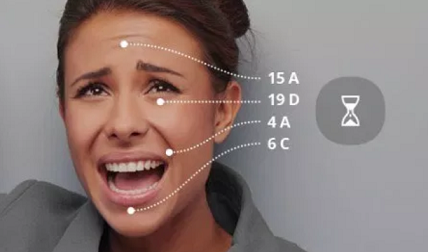 The Yoruba ethnic group in Nigeria are strong believers in the power of the eyes in storytelling and approval. They are of the opinion that a persons position on an issue can be deduced by the facial coding or expression and you cannot hide your true emotion. Their local polygraph technology predates what the Central Intelligence Agency (CIA) is doing at its Langley firm today
The Yoruba ethnic group in Nigeria are strong believers in the power of the eyes in storytelling and approval. They are of the opinion that a persons position on an issue can be deduced by the facial coding or expression and you cannot hide your true emotion. Their local polygraph technology predates what the Central Intelligence Agency (CIA) is doing at its Langley firm today
One of the principles applied to innovation at Kantar Millward Brown is that any new technique has to be scalable, ideally on a global basis. This was why we were the first major consumer insight firm to partner with other marketing scientists to apply the automated coding of facial expressions into our Link pre-test. 30,000 TV ads later and that learning has scaled well beyond providing feedback on individual executions.
The facial coding employed in Link is a true System 1 measure of people’s instinctive emotional response. Changes in facial expression are recorded in real time as people watch a test video (recordings are made with the respondent’s approval) and coded automatically into 7 discrete emotions. At an overall level we find that the more an ad energizes people the more effective it is likely to be in driving sales (particularly for established brands).
Beyond this overall finding, facial coding has confirmed many of the principles learned from testing a total of over 150,000 ads around the world. Dear marketers the following findings are worth keeping in mind when you develop new content for TV.
Make it easy to understand
By all means use intrigue and mystery to engage people but make sure there is a clear resolution to the story because if people do not easily understand what is going on then the ad is less likely to be effective. Videos that people report are difficult to understand evoke a lot more frowns and less attention. Holding people’s attention is particularly important for TV ads given that they rely on a narrative or story that evolves over time. According to Ugo Geri-Robert Head of Kantar Millward Brown Nigeria viewers must not break their heads to understand your comms.
Brand status matters
Established brands elicit more smiles and as a consequence higher valence and expressiveness compared to new brands, which instead elicit more disgust, frowns, and sadness. This suggests it is harder for new brands to breakthrough as they do not have the same emotional foundation that established brands do. Users are more likely to recognize and respond to a brand with which they have a pre-existing affinity.
Testing rough executions works well
Just as with comparisons of self-reported data facial coding finds virtually no difference between testing rough and finished executions. Slightly higher valence is observed for finished films, which reflects our original finding that a finished film can improve overall enjoyment due to production values.
Bottomline line for the brand manager is that you are testing your ad at two levels, first by what the respondents have told you and second by what the faces are telling you. In essence you are killing a bird with two stones. God help the poor bird!


